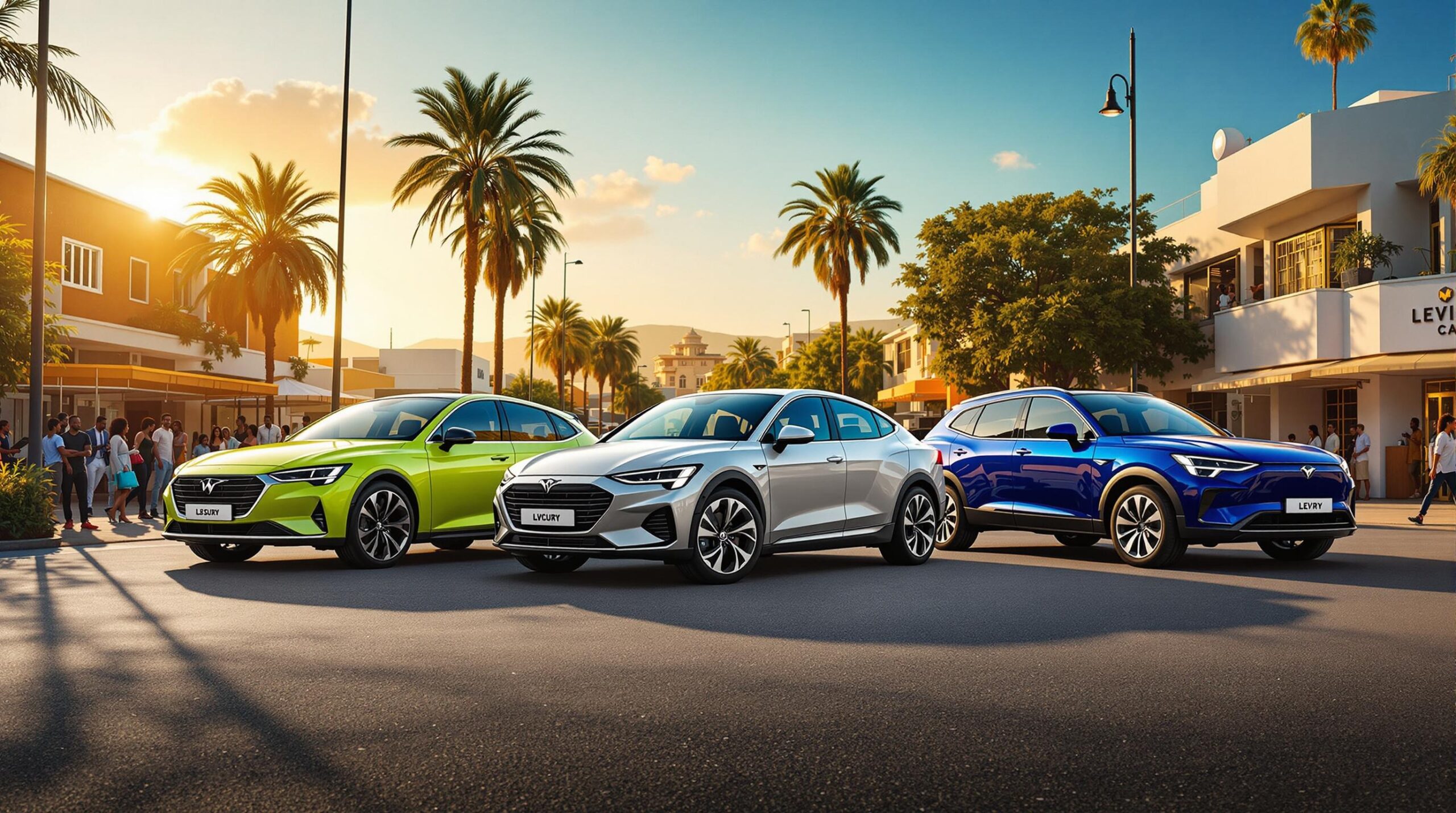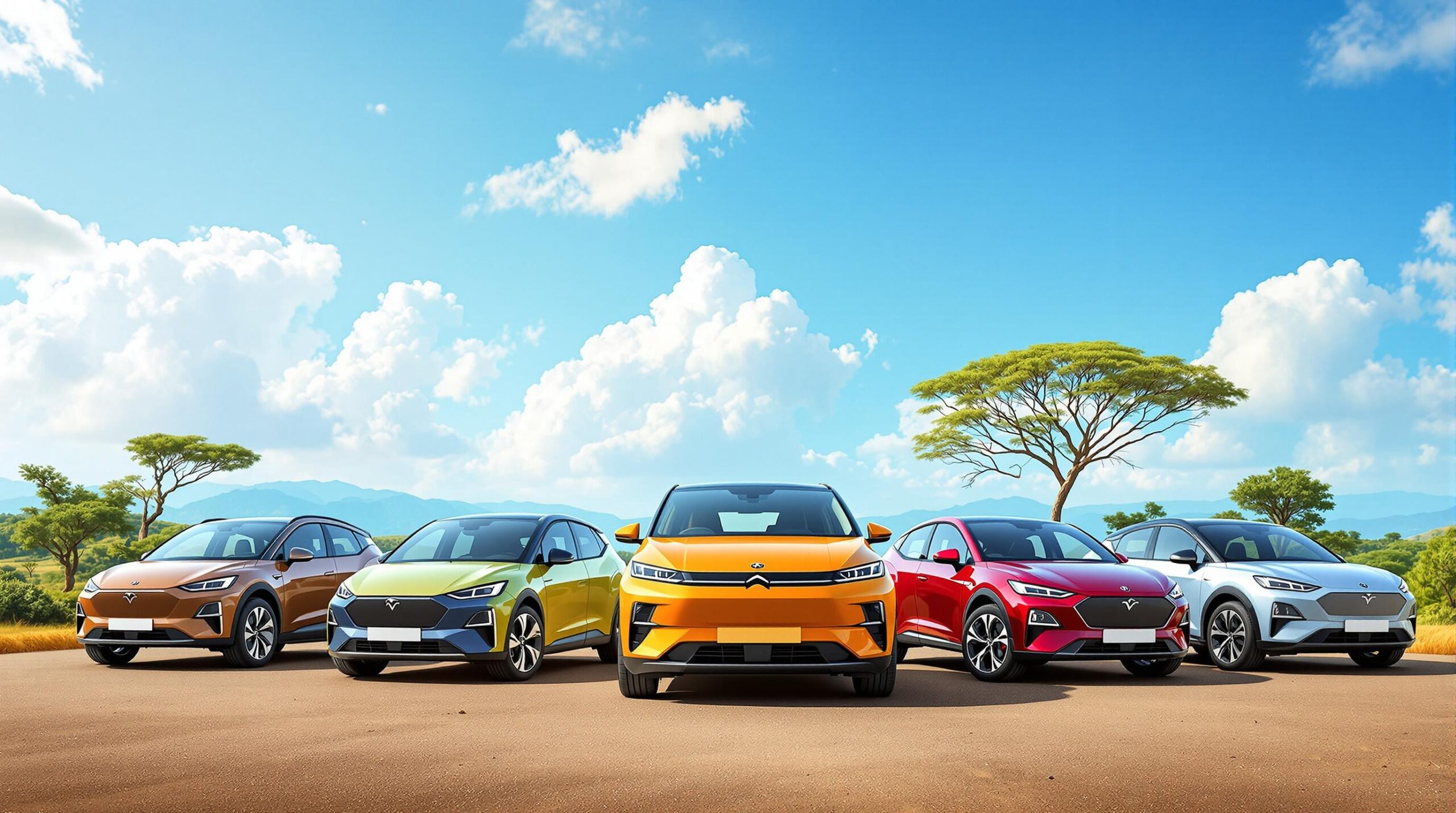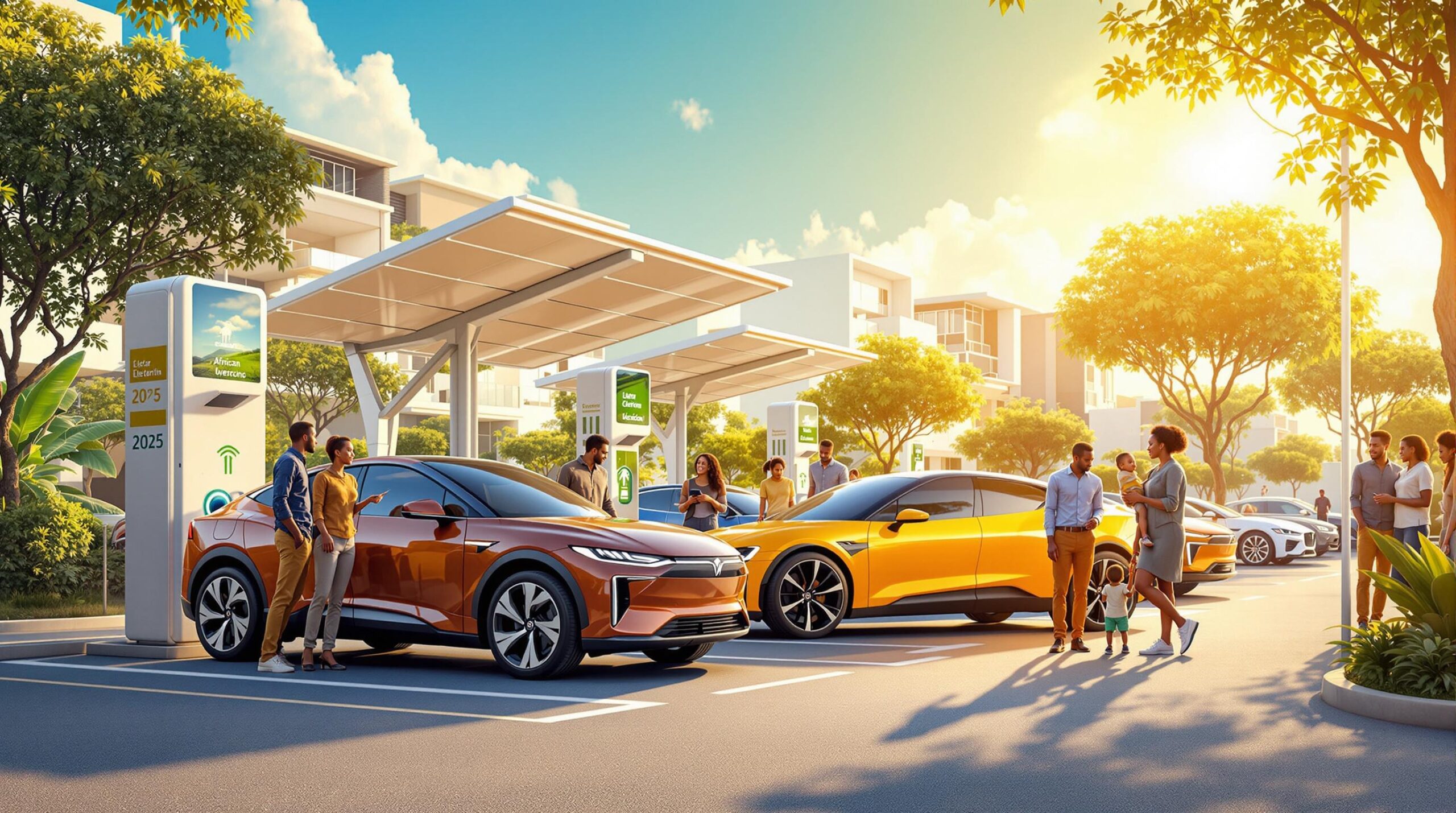
Looking for EV charging stations in Africa? Here’s what you need to know:
- South Africa leads the way with over 450 public chargers, including solar-powered stations and highway coverage.
- Kenya’s EVChaja network focuses on urban areas and key travel routes, offering real-time station availability through its app.
- Morocco, Nigeria, and Rwanda are also expanding their networks, though rural areas remain underserved across the continent.
- Apps like Rubicon Charge and Electromaps make it easy to locate stations, check availability, and plan trips.
Key takeaway: While EV infrastructure in Africa is growing, it’s still concentrated in urban areas. Use apps and plan ahead for long-distance travel.
The Solar-Powered Charging Stations Electrifying Africa
Current State of EV Charging in Africa
Electric vehicle (EV) sales in Africa have jumped by 245%, but the charging infrastructure hasn’t kept pace. Most charging stations are concentrated in South Africa’s cities, making it tough for drivers in rural areas or those traveling long distances to find reliable charging options.
While both public and private sectors are investing in expanding the network, the progress is still limited. Charging infrastructure remains heavily focused on urban areas, leaving large parts of the continent underserved. Let’s take a closer look at some of the leading country-level charging networks.
Leading Charging Networks by Country
Efforts to bridge the gap between urban and rural areas have led to the expansion of nationwide and off-grid charging solutions. These networks highlight the state of EV charging infrastructure across Africa.
South Africa’s Charging Networks
South Africa stands out with over 450 public EV chargers provided by GridCars. This network spans major cities and highways, ensuring broad accessibility. The ChargePocket app, integrated with Google Maps, simplifies the process for drivers to locate, initiate, and pay for charging in seconds. Additionally, GridCars has rolled out Local Smart Charge Controllers (LSCC) in residential areas, allowing multiple EVs to charge simultaneously without requiring grid upgrades.
Zero Carbon Charge is introducing solar-powered, off-grid charging stations. Their first station in Wolmaransstad includes six CCS2 connectors powered by solar panels and battery systems. These ultra-fast chargers can replenish most EVs from 10% to 80% in roughly 25 minutes.
Kenya’s EVChaja Network
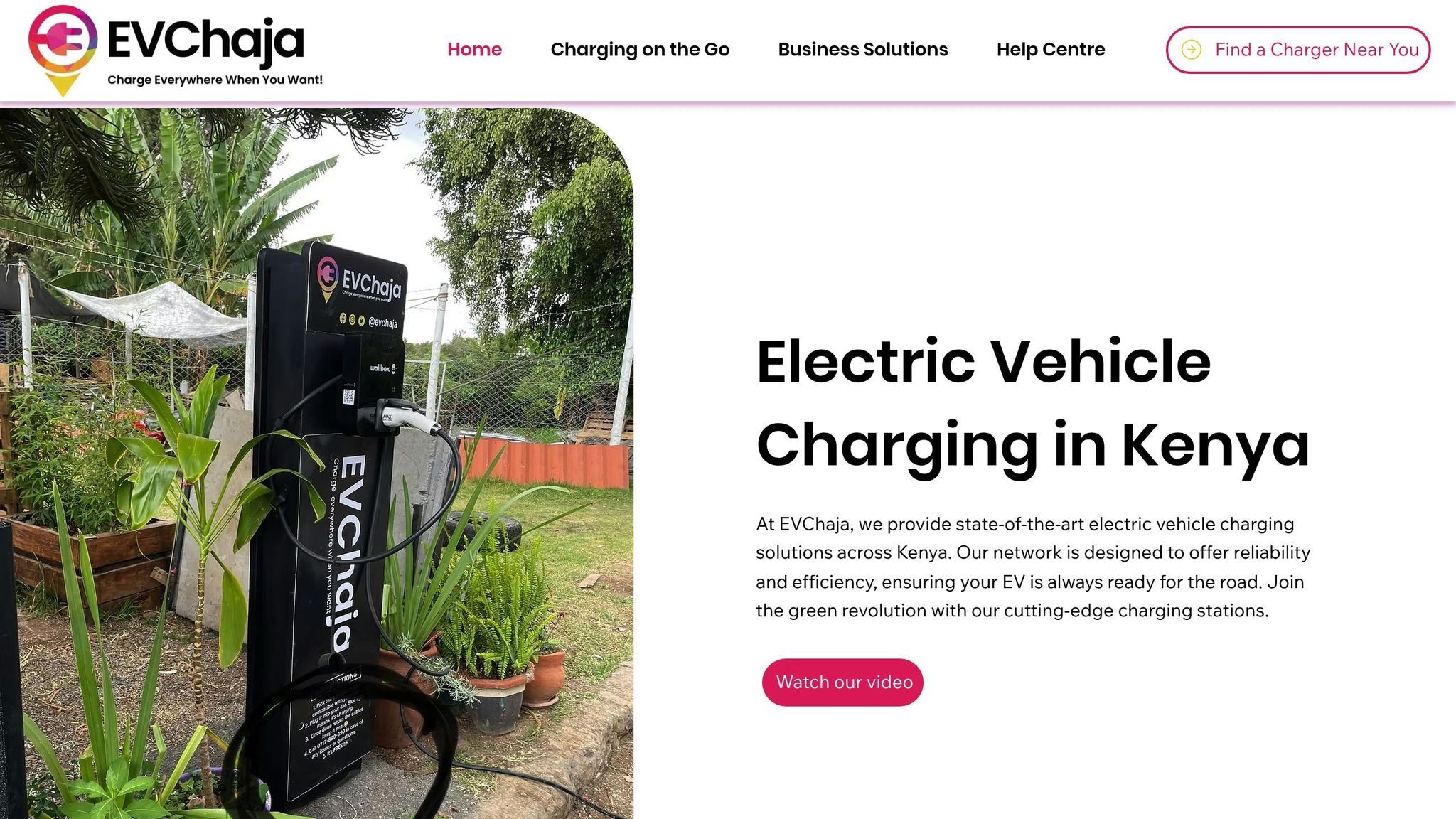
Kenya’s EVChaja is the country’s first dedicated EV charging network, focusing on urban areas and key travel routes. It caters to both individual EV owners and fleet operators. Through its mobile app, users can locate stations, check availability in real time, monitor charging sessions, and make digital payments.
Key highlights:
- GridCars: 450+ stations, LSCC technology, and the ChargePocket app.
- Zero Carbon Charge: Off-grid, solar-powered ultra-fast charging stations.
- EVChaja: Urban and fleet-focused network in Kenya.
Next, let’s explore Morocco’s expanding EV charging infrastructure.
sbb-itb-99e19e3
Finding Charging Stations
Apps and Navigation Systems
Several apps and navigation tools make it easy to find charging stations wherever you are.
- Rubicon Charge: This app helps you locate chargers, monitor charging sessions, and even pay using its in-app wallet. It integrates with Google Maps and allows filtering by capacity and connector type.
- EVPlugin: Available on iOS and Android, this app maps charging stations across Rwanda, including Kigali. It also supports in-app payments and session tracking.
Online Maps and Station Finders
Here are some additional tools for locating charging stations:
- Electromaps: Offers community reviews, real-time availability, and photo sharing for stations across Africa.
- Open Charge Map: A global registry with detailed information on charging stations.
- EVChaja App: A station locator tailored specifically for Kenya.
Road Trip Planning
When planning a long-distance trip, combining these apps and maps can help ensure a smooth journey. Follow these tips:
- Map major networks: Use tools like Rubicon Charge to identify key charging corridors.
- Plan backups: Mark alternative stations in case your primary options are unavailable.
- Check compatibility: Confirm connector types and charging speeds before hitting the road.
Using Charging Stations
Charger Types and Speed
- Level 1 (110–120 V AC): Adds 3–5 miles per hour of charge. Best suited for overnight charging at home.
- Level 2 (220–240 V AC): Provides 10–50 miles per hour of charge. Commonly found at workplaces, shopping centers, and public areas.
- DC Fast Chargers (CCS, CHAdeMO): Can fully charge a vehicle in 10–60 minutes. Typically located along highways for quick charging during long trips.
Level 2 chargers are most prevalent in urban areas, while DC fast chargers are strategically placed along major travel routes.
Solar and Off-Grid Stations
In addition to grid-connected chargers, solar-powered stations are an option for areas with limited access to the electrical grid.
"Charging EVs with solar panels allows access to locations inaccessible to petrol cars".
For example, a 10 kWp solar array (about 42 panels) can generate approximately 32.5 kWh per day, which is enough energy for around 93 miles of driving.
Companies like Venema E-Mobility offer DC chargers that connect directly to solar panels. This setup minimizes energy conversion losses and improves efficiency for off-grid charging.
Conclusion
South Africa’s GridCars, Kenya’s EVChaja, and Morocco’s Maroc Telecom networks, along with the apps, maps, and solar charging options mentioned earlier, highlight the progress in Africa’s EV charging infrastructure. With increased investment, solar-powered charging stations, and more highway chargers, the continent is steadily building a network that supports both routine commutes and long-distance trips.

